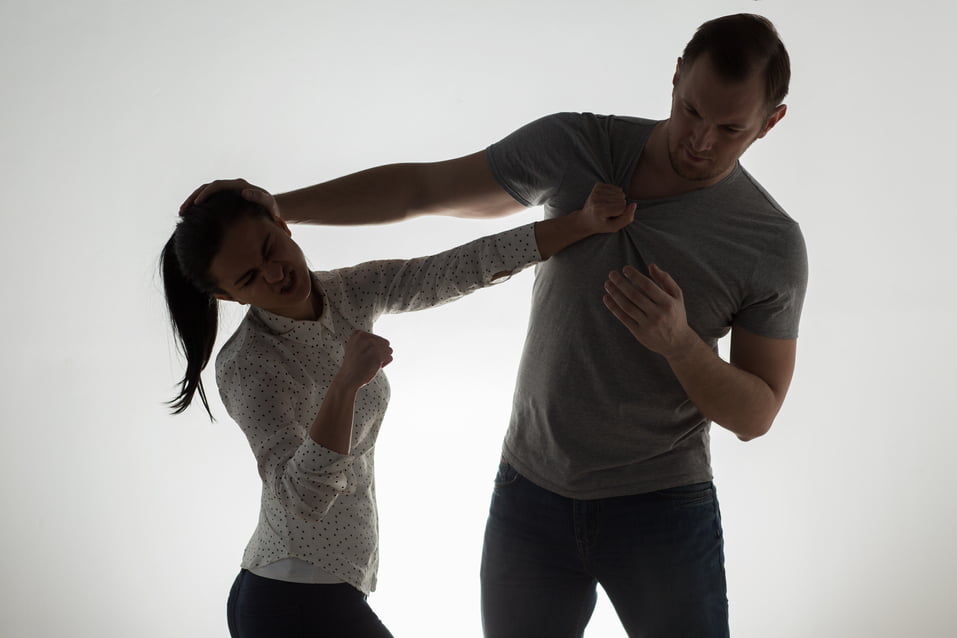There’s a reason we’re in trouble
Women in prison have often been victims of much more serious offences than those of which they have been convicted.
That’s the headline finding from a new (4 December 2017) report published by the Prison Reform Trust.
Fifty-seven per cent of women in prison report having been victims of domestic violence. More than half (53%) report having experienced emotional, physical or sexual abuse as a child compared to 27% of men
Because many women fear disclosing abuse, both figures are likely to be an underestimate. The charity Women in Prison report that 79% of the women who use their services have experienced domestic violence and/or sexual abuse.
PRT sets out the purpose of this report:
to highlight the links between women’s victimisation and their offending and make recommendations that will help break the cycle. Our intention is neither to pathologise nor to exculpate women offenders affected by domestic abuse, but to understand the factors underlying their offending and ensure that these are fully and fairly taken into account in decision-making by criminal justice agencies.
The report contains a number of anonymised case histories some of which are reproduced in this post.
Mary’s story
Mary, aged 25, lives with her family in London. She suffers with post-traumatic stress disorder, depression and anxiety as a result of being in an abusive relationship for around two and a half years. Her ex-partner has been convicted of offences against her and there is now an indefinite
restraining order in place. Mary smokes cannabis as a form of escapism and suffers with insomnia – she feels it helps her to relax and to sleep. She was studying Law at university but was forced to drop out by her ex-partner, and is now unemployed but not in receipt of benefits.
Mary was convicted of driving whilst disqualified and possession of class B cannabis and received a community order with unpaid work and 20 days rehabilitation activity requirement. This offence occurred as a result of threats made by her ex-partner against her family and her friends if she did not use her mother’s car to drive him around, despite her being disqualified. Due to fear of what he might do, she agreed to do this. They were then stopped by the police who conducted a search and found cannabis in the car. This belonged to Mary’s ex-partner, but she took the blame.

Context
The report identifies strong links between women’s experience of domestic and sexual abuse and coercive relationships, and their offending. Research has confirmed that women often encounter a culture of disbelief in the criminal justice system about the violence and exploitation to which they may have been exposed.
As a consequence, women can become trapped in a vicious cycle of victimisation and criminal activity. Their situation is often worsened by poverty, substance dependency or poor mental health. Imprisonment compounds their problems and has a severely detrimental impact on any dependent children.
Although the co-existence of victimisation and offending is now better recognised, the links between them are still not well understood by all agencies. There has been some progress both in tackling violence and abuse against women and girls, and in the treatment of victims in the criminal justice system. Improvements in the police response and in aspects of the court process should lead to benefits for women offenders affected by domestic abuse, but challenges remain. The latest figures from the Crown Prosecution Service show a reduction in prosecutions for domestic abuse, and funding cuts to specialist domestic abuse services including refuges leave vulnerable women without support.
The report is particularly timely in light of the forthcoming Domestic Violence and Abuse Bill and development of the government’s strategy on women offenders.
Sophie’s story
Sophie, aged 40, received a six month community order with 10 days rehabilitation activity requirement for common assault, her first criminal conviction. Sophie had been married for over 13 years and separated from her husband 18 months before the offence. She disclosed both verbal and physical abuse for the duration of her relationship with her husband, and said that the police were often called out to their address by neighbours. Sophie and her husband have two children together, an 11 year old daughter and a ten year old son, and the children were the main reason Sophie did not want to end the relationship. Sophie’s offence was against her ex-husband’s new partner, who she assaulted when she saw her and her ex-husband dancing together in a pub.
Sophie said her actions on that evening were the result of anger and frustration built up during her relationship with her abusive ex-husband. She has been diagnosed with anxiety and depression and is receiving counselling.
Findings
The women interviewed for the report felt that that the police were rarely sympathetic or helpful to them as victims of domestic abuse, and did not demonstrate an understanding of the dynamics of abusive relationships.
They did not have confidence in the police to identify the primary aggressor and provide protection. A number of women reported that they had been repeatedly arrested by the police in incidents of domestic violence where they had not been the primary aggressor.
Linked with this was the unwillingness of women in many cases to support criminal proceedings against their abuser, predominantly because of fear of more violence when an abuser is released.
Funding cuts to women’s services, including refuges, are a barrier to progress. The patchy availability of support on release from prison, including suitable housing, health and social care services and welfare benefits, leaves women even more vulnerable to abuse and offending.
There is inadequate provision of accredited rehabilitation programmes in men’s prisons and in the community aimed at changing the behaviour of male perpetrators of domestic abuse and preventing further abuse.
Belinda’s story
Belinda, aged 31, lives in a self-contained hostel after fleeing domestic violence – a relationship that she was in for five years which she describes as the “worst five years of her life.” She was subject to physical, emotional and financial abuse. She has scarring on her face and her body as a result of her ex-partner scalding her with boiling hot water and a scar underneath her eye where he slashed her with a broken glass bottle. She has a diagnosis of ADHD, OCD and depression and suffers with insomnia. Belinda grew up in care with two of her sisters, with whom she has a good relationship, and has rebuilt her relationship with her mother.
Belinda was convicted of assault and received a community order with unpaid work and 30 rehabilitation activity requirement days. This offence involved Belinda’s most recent partner, from whom she had experienced physical and emotional abuse. On the night of the offence, the two were at a party and he had consumed excessive alcohol. He attempted to force himself onto Belinda. She punched him in the face, ended the relationship and left the party. He reported the assault to the police with a number of his friends making statements and Belinda was arrested.
Recommendations
The report recommends that the Home Office and Ministry of Justice should work closely together, and, in consultation with the Welsh government, ensure that the forthcoming women offenders strategy addresses the extent to which domestic and sexual violence and abuse underpin the life experience of many women offenders, and include clear expectations on criminal justice agencies to improve their responses to women.
It calls for the police, prosecuting authorities, probation services and the courts to adopt the practice of appropriate, routine inquiry into women’s histories of domestic and sexual violence at each stage of the criminal justice process to ensure informed decision making and proportionate responses.
The report also highlights the lack of any effective defence for women victims/survivors of domestic abuse whose offences arise from coercion or duress as part of an abusive relationship.
All prison posts are kindly sponsored by Prison Consultants Limited who offer a complete service from arrest to release for anyone facing prison and their family. Prison Consultants have no editorial influence on the contents of this site.








